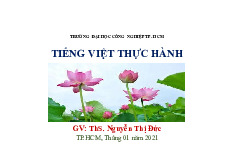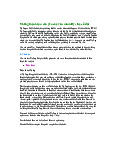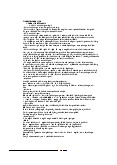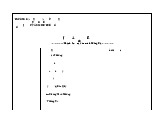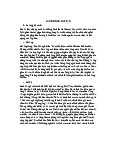












Preview text:
China
THE LAND OF HISTORICAL WRINKLES Đỗ Minh Anh - 22E7
IT 100 | UNIVERSITY OF LANGUAGES AND INTERNATIONAL STUDIES China Table of Contents
I. Overview...................................................................1
1. Geography..............................................................2
2. Climate...................................................................2
II. Economy – Society of China......................................3
1. Economy.................................................................3
a. Economic reforms.................................................4
b. Increasing labor force...........................................4
2. Society....................................................................4
III. Cultural of China......................................................6
1. Philosophy and religion...........................................6
2. Art and architecture................................................7
3. Music......................................................................7
4. Cuisine....................................................................8
5. Festival...................................................................8
IV. People in China........................................................9 Hello Đỗ Minh Anh - 22E7 1 China I. Overview
China is a country located in East Asia, with the largest land area in
the world, spanning 9.6 million square kilometers. China shares
borders with 14 countries, including Russia, Mongolia, Kazakhstan,
Kyrgyzstan, Tajikistan, Afghanistan, Pakistan, India, Nepal, Bhutan,
Myanmar, Laos, Vietnam, and North Korea. Picture 1- China
China has a long history, spanning through various feudal dynasties.
Chinese civilization is considered one of the oldest and most
developed civilizations in the world. China is the birthplace of many
important inventions, such as paper, printing, compass, gunpowder, and more.
China is currently the world's second-largest economy. Its economy
is rapidly growing, with an average annual GDP growth rate of
around 7%. China is a major industrial and trading powerhouse on the global stage.
China is a multi-ethnic country, with over 56 ethnic groups living
within its borders. The official language of China is Mandarin
Chinese, but there are also numerous minority languages used in
different regions of the country. Đỗ Minh Anh - 22E7 2 China
China has a rich and diverse culture. Chinese culture has deeply
influenced other cultures around the world. Some notable aspects of Chinese culture include:
Religions: Buddhism, Confucianism, and Taoism are the main religions in China.
Cuisine: Chinese cuisine is one of the most famous cuisines in the world.
Traditional Clothing: Hanfu is the traditional attire of China.
Arts: Chinese art encompasses various fields such as painting,
sculpture, music, dance, and more.
China is a country with a long and storied history and culture. Its
economy is experiencing robust growth, and China is gradually becoming a global superpower. 1. Geography
Located in Asia, China shares borders with 14 countries. China ranks
third in the world in terms of land area after Russia and Canada, and
it is the most populous country. Half of China's territory is
mountainous and mainly concentrated in the west, including the
Antai and Tianshan ranges in Xinjiang Uygur Autonomous Region,
and the Kunlun Mountains in northern Tibet.
The Tibetan Plateau reaches an elevation of 3,000 meters above sea
level, and to the south is the Himalayas, with 40 peaks over 7,000
meters, including Mount Everest, which stands at 8,863 meters, the
highest peak in the world. The Yunnan-Guizhou Plateau is located in
the south, with peaks reaching nearly 3,700 meters. Surrounding the
Northeast Plain are the hills and mountains of the Hinggan Ling and Changbai Mountains.
The Qinling Mountains run through central China, dividing the
drainage basins of the Yellow River and Yangtze River; the Nanling
Mountains divide the basins of the Yangtze River and Pearl River.
The three low-lying regions in eastern and central China are fertile
agricultural areas with dense populations, including the central Đỗ Minh Anh - 22E7 3 China
plain, the Inner Mongolian plateau, and the extensive loess plateau
located in the Tarim and Dzungarian river basins. 2. Climate
China is located in the monsoon region and has an extremely
diverse climate ranging from warm to arid. The average
temperatures between months vary greatly, with January averaging
around -5 degrees Celsius and July averaging 26 degrees Celsius.
The three regions considered the hottest in China are Zhongshan,
Wuhan, and Beijing. Due to its vast land area, China has a complex
terrain and significant differences in elevation between regions,
resulting in a diverse climate. The climate types from south to north
in the country are tropical, subtropical, temperate, and cold temperate.
In winter, most of China experiences cold climates. There is a
distinct difference in climate between northern and southern regions.
In summer, except for the high-altitude Tibetan Plateau, the
climate throughout the country is generally warm and rainy,
although the amount of rainfall varies across different regions.
II. Economy – Society of China 1. Economy
China has experienced remarkable economic growth over the past
few decades, transforming itself into the world's second-largest
economy. The country has transitioned from a centrally planned
economy to a more market-oriented system, embracing elements of
capitalism while maintaining state control over strategic sectors.
China's economic success has been driven by its export-oriented
manufacturing sector, which has made it a global manufacturing powerhouse.
Table 1 - China's economic growth from 1978 to 2023 Year GDP (billion USD) GDP growth (%) 1978 362.4 6.5 Đỗ Minh Anh - 22E7 4 China 1980 432.0 15.2 1985 620.7 10.2 1990 911.2 9.5 1995 1,241.7 10.1 2000 1,432.2 8.5 2005 2,247.7 11.1 2010 4,903.2 10.3 2015 10,327.7 6.9 2020 14,723.7 2.3 2021 17,712.0 8.1 2022 19,202.3 5.5
The chart shows that China's economic growth has been remarkable
since the country began its economic reforms in 1978. The GDP of
China has increased by more than 5,000 times in the past 45 years.
The rapid economic growth of China can be attributed to a number of factors, including: a. Economic reforms
The economic reforms of 1978 led to a shift from a centrally planned
economy to a market-based economy. This allowed for greater
economic efficiency and productivity.
Opening up to the world: China has opened up its economy to the
world, which has led to increased trade and investment. b. Increasing labor force
China has a large and growing labor force, which has helped to keep labor costs low.
The rapid economic growth of China has had a significant
impact on the world economy. China is now a major player in
the global economy, and its economic growth has helped to drive global economic growth.
The future of China's economic growth is uncertain. However,
the country's strong economic fundamentals and continued
commitment to reform suggest that China is likely to continue
to grow at a rapid pace in the years to come. Đỗ Minh Anh - 22E7 5 China
However, China still faces challenges such as income inequality,
environmental degradation, and an aging population. The
government is actively addressing these issues through policies
aimed at reducing poverty, promoting sustainable development, and
implementing social welfare programs. 2. Society
Chinese society is characterized by its rich cultural heritage, shaped
by thousands of years of history. Traditional values such as filial
piety, respect for authority, and the importance of education
continue to influence Chinese society. However, rapid modernization
and urbanization have also brought about social changes and cultural diversity.
Picture 2 - The Great Wall of China
Family plays a central role in Chinese society, and strong family ties
and kinship networks are highly valued. Confucian values
emphasizing hierarchy, harmony, and social order are still influential
in interpersonal relationships. However, younger generations are
increasingly embracing more individualistic and Westernized values. Đỗ Minh Anh - 22E7 6 China Picture 3 - Education of China
Education is highly valued in Chinese society, and there is a
strong emphasis on academic achievement. The competitive
nature of the education system, particularly the college
entrance examination (gaokao), places significant pressure on students to succeed.
Urban areas in China have seen significant growth and offer
diverse opportunities for employment, education, and cultural
experiences. Major cities such as Beijing, Shanghai, and
Guangzhou are vibrant economic and cultural centers,
attracting migrants from rural areas seeking better opportunities.
China is a multiethnic country with Han Chinese being the
majority, but it also has 55 recognized ethnic minority groups.
Each group has its own distinct traditions, languages, and
cultural practices, contributing to the country's cultural diversity.
Social media and technology have become integral parts of Chinese
society, with platforms such as WeChat and Weibo being widely
used for communication, entertainment, and e-commerce. The rapid
development of technology has also contributed to China's global
influence in areas such as e-commerce, mobile payment systems, and artificial intelligence. Đỗ Minh Anh - 22E7 7 China
Overall, China's economy and society continue to undergo rapid
transformation, blending traditional values with modern influences,
and playing an increasingly significant role on the global stage. III. Cultural of China
Chinese culture has a long and rich history that has exerted a
powerful influence on many countries and regions in East Asia.
Chinese culture is diverse and unique, combining elements of
ethnicity, religion, philosophy, and history. 1. Philosophy and religion
Philosophy and religion play significant roles in Chinese culture.
Confucianism, Daoism, and Buddhism have deeply influenced the
lives and thinking of the Chinese people. Confucianism focuses on
family values, personal ethics, and social harmony. Daoism and
Buddhism emphasize respect for nature and spiritual traditions. 3% 2% 5% 10% Non-religious Taoism Buddhism Christianity Islam 80%
Chart 1 - Distribution of religion in China
The Communist Party of China (CPC): The CPC is the ruling
party of China, and it is officially atheist. The CPC has
promoted atheism as part of its ideology, and it has
discouraged religious activities.
China's rapid economic development: China's rapid economic
development has led to a focus on material well-being, which
has displaced religious beliefs for many people.
China's diverse cultural heritage: China has a long and diverse
cultural heritage, which includes many different religions. This Đỗ Minh Anh - 22E7 8 China
diversity has led to a more syncretic approach to religion in
China, with many people combining elements of different religions.
The future of religion in China is uncertain. The CPC's continued
control over religious activities is likely to limit the growth of religion
in China. However, the country's diverse cultural heritage and the
increasing number of religious minorities could lead to a more
tolerant approach to religion in the future. 2. Art and architecture
Picture 4 - Art and architecture in China
Chinese art and architecture showcase diversity and distinctive
styles. Chinese literature has produced classic works such as the
"Four Great Classical Novels" and the "Book of Songs." Poetry,
novels, and traditional folk tales also hold great importance. In the
fields of painting and sculpture, China is known for silk painting, folk
art, and gemstone paintings. Chinese architecture features notable
structures such as the Forbidden City, the Great Wall, and the Terracotta Army. 3. Music
Music and performing arts are integral to Chinese culture.
Traditional Chinese music often employs instruments such as the
Guzheng, Pipa, and Erhu. Performing arts include Beijing Opera, Đỗ Minh Anh - 22E7 9
